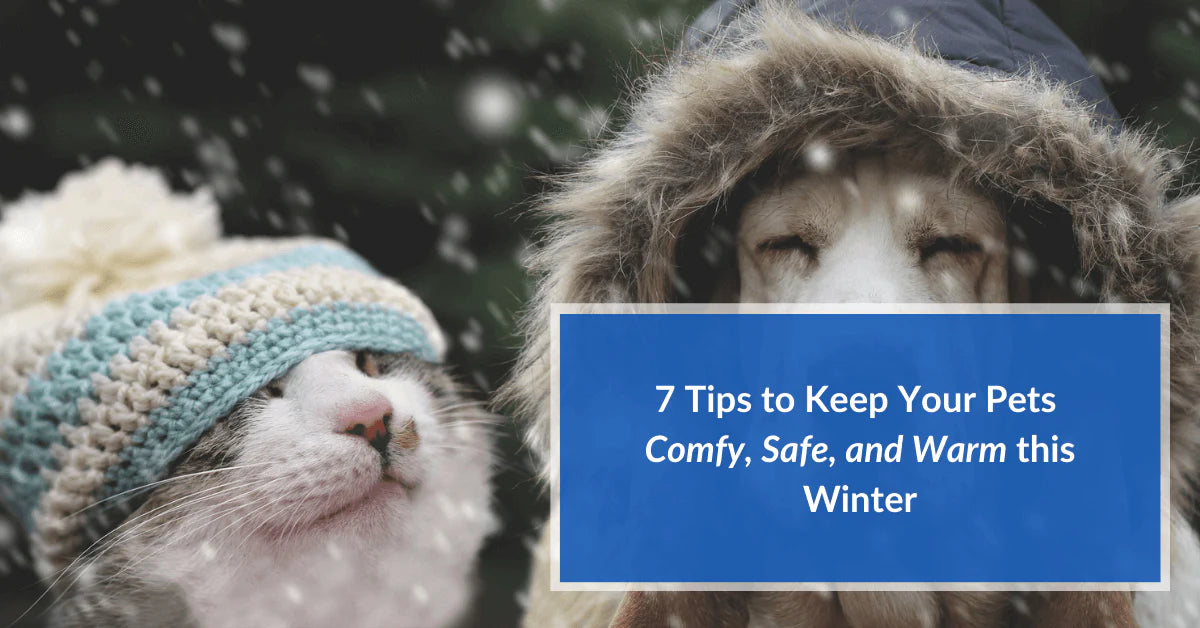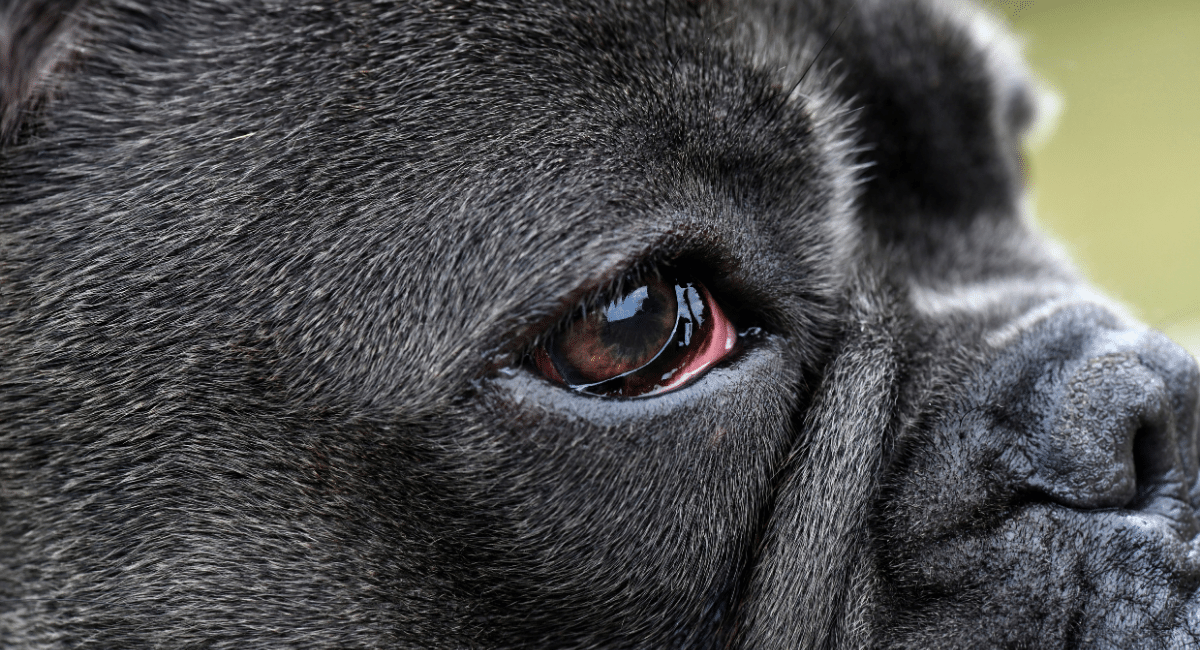Oh, the weather outside is frightful! But we’ve got to keep our pets feeling joyful. We’ve remixed the lyrics of 'Let it Snow' a tad, but our message is intentional. In a few weeks, life will change temporarily for our pets: winter is approaching. Sure, they’ll love to frolic, roll and dig in the freshly fallen snow. However, without taking the right precautions to protect them from the cold, their health and safety could be in danger.
The following are just a few of the winter illnesses pets can contract when the weather turns frosty:
- Hypothermia
- Frostbite
- Sniffles
- Flu and Pneumonia
- Kennel cough
And if you live in an area that gets lots of snow, then although you are probably thankful for the snow trucks that put rock salt on the road to keep your car from sliding, that same salt can wreak havoc on your pet’s precious paws as well as their internal organs if they ingest too much of it.
Avoid any suffering by implementing our 7 tips to help them stay safe and warm this winter season.
1. Know Your Pet's Natural Winter Response
All pets experience cold weather differently.
A golden retriever will likely feel less cold than a Beagle due to the thickness of the breed's fur. Some dogs, such as Huskies and Border Collies grow out a second coat under their fur, specifically to keep them warm, allowing them to work or play for hours, in even the coldest of temperatures.
A long-haired cat will also feel warmer than a short-haired cat. And if your dog or cat spends most of their time outside, they’ll have callused paws that can withstand cold weather as opposed to an indoor pet who will have softer paws.
The Happy Healthy Tip:
Before you follow our other winter precautions, it’s important to understand how your furry friend will naturally respond to the harsh cold. This understanding sets a great foundation to take action on our other tips.
2. Get Reliable Paw Protection
When your happy kitty or pup prances or pounces on the cold ground, their precious paws can experience cracking, frostbite, and drying. What's worse, the salts and chemicals used to melt the snow can be absorbed through their pads causing dehydration, or even chemical burns. And if they lick the rock salt off their paws they can do serious damage to their pancreas, liver and kidneys.
The Happy Healthy Tip:
Always use paw protection! Purchase your buddy some waterproof booties. If they happen to walk on the snow without them, or refuse to wear protection (as some stubborn pups do – including mine), immediately wipe and even wash their paws as they come inside and be sure to triple check for any cuts or injuries. You can also apply some paw balm or coconut oil to keep their paws from cracking. And although not everyone may do this, you can do your part to make it easier on your pets’ paws by using a pet safe ice melter instead of rock salt to keep the sidewalks clean around your house.
3. Keep Your Eyes on the Water
Myth #1: Pets lose more water from their bodies in the hot weather.
Myth #2: Pets don’t get dehydrated in the cold weather.
If you’ve been a pet parent for some time, you may have noticed your baby’s extreme thirst during the snowy season. Winter brings such dry weather that pets lose much of the moisture from their bodies, especially through panting.
But keep an eye out for puddles! Thirsty pets may try to get the moisture they crave by drinking the melted snow that collects in street puddles. And while you may think that this is safe because it’s just snow, if the puddle is on a road where cars park then the water can also contain antifreeze that leaks from cars making the puddle water extremely harmful for your pet. A main ingredient in antifreeze is ethylene glycol, which is highly poisonous and can lead to acute kidney and liver failure in pets.
Cats can be poisoned with as little as one teaspoon of antifreeze, and for dogs all it takes is for them to ingest only about 1-2 tablespoons. If you notice your pet acting drunk, depressed or delirious; if they appear weak, urinate excessively, or vomit after being outside – get them to a vet or call poison control right away! Time really is of the essence here to make sure that your pet gets the proper antidote.
The Happy Healthy Tip:
Keep your pet on a leash and make sure they don’t drink from street puddles. You can also keep them safe and prevent dehydration by ensuring their bowls are filled with clean water at all times!
4. Keep Them Warm, Whether Indoors and Outdoors
Brrr! It’s too cold to keep them outside.
Let’s be honest: as a human, you wouldn't want to be out in those harsh conditions in just your clothes and a thin coat for a prolonged period; it's no different for your pet. This is especially true for dogs and cats that have short coats or only a single coat during the winter months. If your pet is not suited to the cold, keep walks short so as not to expose them for longer then their bodies can tolerate.
Small pets, or those with short legs that are low to the ground, can also get buried or lost in the deep snow mounds after a heavy snowfall. Getting buried in snow may sound like a lot of fun for kids, but dog and cat breeds that aren’t suited to the cold environment can lose a lot of body heat fast, leading to hypothermia.
The Humane Society of the United States has stated that it is illegal to leave animals out in the cold weather for more than 30 minutes. Neglecting them in the cold without proper shelter can lead to an early death.
The Happy Healthy Tip:
Bring your fur kids inside and ensure they’ve got sufficient dry bedding to keep them warm. We understand that sometimes it may be hard to get your pets to come indoors, especially for feral cats, but you can still protect them outside by creating a cozy insulated shelter that’s roomy enough for them to move around and preserve their body heat. With a little creativity, a draft-free garage, porch, or shed can become a comfy, warm outdoor home for your pet.
5. Wipe Their Coat Off
When they return inside after a quick walk with you or a romp in the snow, your dog will most likely give their whole body a shake to get the excess snow off; your cat may decide to do some extra grooming and lick it all off. You may think they’ve got it handled, but in most cases they still need a hand to get themselves fully dry.
Snow and ice stuck in their fur can leave them very wet and at risk for hypothermia. Rock salt from the road can also hide inside your pet’s coat, especially if they’ve been rolling around outside. And even anti-freeze can get stuck in their coats making them extremely ill.
The Happy Healthy Tip:
Be sure you wipe their coats off thoroughly and look for any salt stuck in the fur. To help you remember this step, we recommend leaving a special pet towel by the door. Don’t forget to clean their pads too!
If you start training your pet early, you can even get them to wait by the door and give you their paws to clean before they run into the house. This habit can save both your pet, and your floors and furniture.
6. Keep Their Joints Comfy
Unfortunately, if your pet suffers from arthritis or another bone and joint challenge like hip dysplasia they may experience increased discomfort during the winter months as the cold causes joints to stiffen up.
Never fear! We’ve got a few ideas to ease the pain:
The Happy Healthy Tip:
- Place extra blankets around the house so your fur baby has accessible places to rest their joints.
- Keep them on their toes with plenty of playtime. It will be a big help in regulating their weight, which is integral in reducing the pressure on their joints.
- Our natural anti-inflammatory and pain relief supplements are a great support for helping your furry friends get through the cold with the least amount of pain possible.
7. Opt-out of Trimming and Buy a Coat
Save their coats, save their lives!
The winter season is a bad time to give them your pet a trim. After all, it is one of their first lines of defense against the frigid temperatures.
If your baby is small, short-haired, short-legged, elderly, or sick, he’ll need some extra coating support to survive the season.
The Happy Healthy Tip:
If your pet has long fur, don't shave him; let his long, fluffy coat keep him warm and toasty; but of course, keep it clean and snow-free!
If your pet has shorter hair, you still have an opportunity to give them a fighting chance against the cold by getting them a warm coat or covering. There are so many different styles and brands of coats that you’ll be sure to find the paw-fect clothing to protect your pal while keeping them comfy and fashionable!
Winter is a fun season with lots of great activities you can enjoy. Having your fur babies with you during the winter is always a delight, but to make the most of the season it's important to also keep them warm and protected. It really doesn’t take much effort. So, this year when the cold sends you scurrying inside, don’t forget your furry four-footed pal and their essential needs!
Keep your pets healthy, cozy, and pain-free this season by stocking up on some of our natural products. Explore our relief options here.



